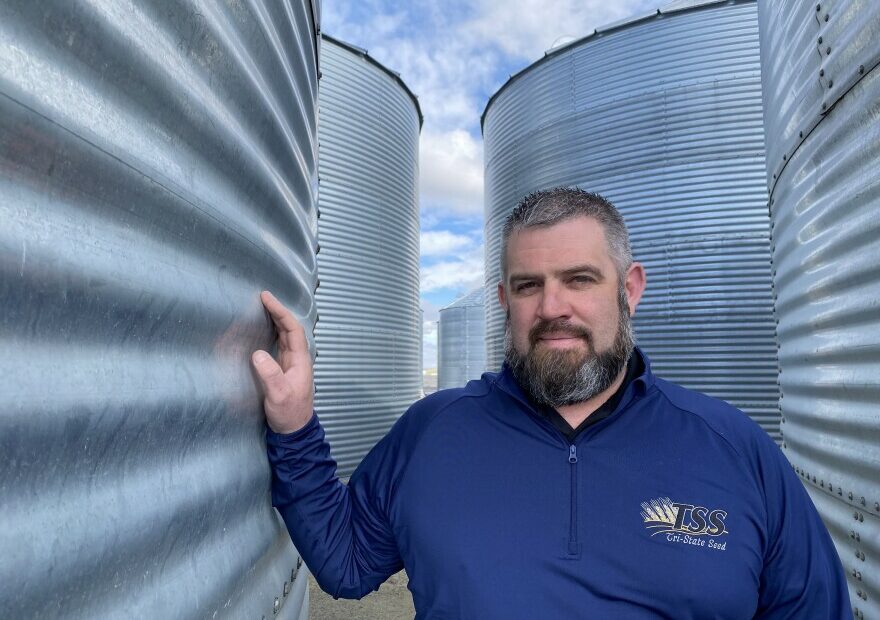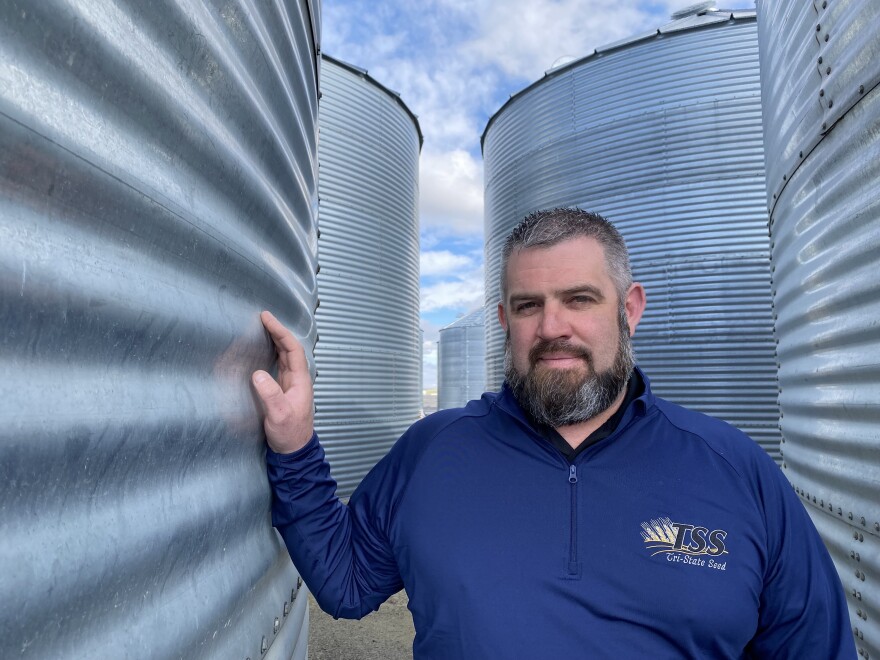Mason Douglass dials his desk phone from a spick-n-span triple-wide plunked in a gravel lot in front of 30 silver corrugated silos outside of Connell, Washington.
“It’s probably going to be a voicemail,” he murmurs.
Douglass is the general manager of Tri-State Seed on the north edge of Connell, Washington.
“Hey Matt, this is Mason with Tri-State Seed returning your phone call,” he chirps after the beep.
Douglass gets about 10 calls from all over the West a day, farmers looking to plant forage crops for cattle – oats, barley and triticale.
“So, I got your message,” Douglass says. “You’re looking for some oats and some haybet barley. I hate to let you know, but unfortunately we’re out of oats and barley at this time. I don’t even know where to send you … I think everyone in this local area is sold out.”
He says those few seeds that are available are double the price they should be.
In fact, this year Tri-State Seed is hedging a bit by making additional contracts with farmers on irrigated ground to grow seeds.
“We put a lot more stuff on irrigated, which costs more money to go do” Douglass says. “But we’re trying to produce more to hopefully have more to sell to our customers this fall. Mother Nature is I guess the unpredictable beast that we face.”

Not since 1895
Jeff Marti is the drought coordinator for Washington state’s Department of Ecology.
“So last year was a really bad year for drought,” Marti says. “Really extraordinarily dry year. One of the driest years since 1895.”
He says it’s not looking good this spring east of the Cascades in Washington or across much of Oregon.
And the region is still recovering from last summer’s unprecedented triple-digit heat dome event. Marti says the state is watching declining conditions closely and may extend its drought declaration this June. The snowpack across the Northwest has entered the “melt phase,” he says.
“This winter we needed to have just a really good comeback year,” Marti says. “We needed an awesome snowpack, lots of precipitation, especially on the east side. And that didn’t happen.”

‘Get on a truck’
Katie Baltzor is a southeast Oregon rancher outside of Burns. She’s been checking on her mamas and their brand new calves every two hours with her small Ranger farm vehicle.
When she cuts the engine amid the cattle, the new mothers start to bawl. She says she’ll have to cull her family’s cattle this year. There’s just not enough grass on their allotted range to keep the mamas healthy enough to get pregnant again this year.
“If these cows are turned out and there really isn’t enough feed, they can really go downhill quickly,” Baltzor says. “And then that affects your breed back and just how well they are raising the calf that’s at their side.”
In her government range allotments, reservoirs and water holes she’s never seen empty in 30 years, are nearly dry this spring. That means they’ll likely have to haul water in trucks up to the animals in the mountains.
On top of all this, she’s had to pay $100 a ton more for alfalfa over last year. So it’s mighty expensive to bring the cattle home off the range early. The only solution is to cut down the herd. Usually, it’s the older cows that have to go first.
“You know exactly everything about that cow,” Baltzor says. “And how many calves she had. And what type of calf she produces, and it’s really hard to sell those. To watch those get on a truck.”
Back at the seed silos in Washington, Mason Douglass is moving oats with cork-screw-shaped augers from one bin to another. He says farmers watching the process at Tri-State Seed sometimes see the oats, and want to buy them. But Douglass says, they’re all spoken for.
An auger works to move oats from one bin to another at Tri-State Seed outside of Connell, Wash.

















